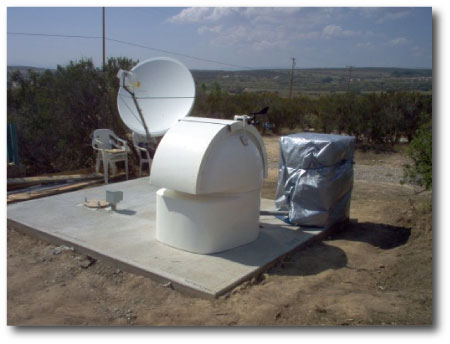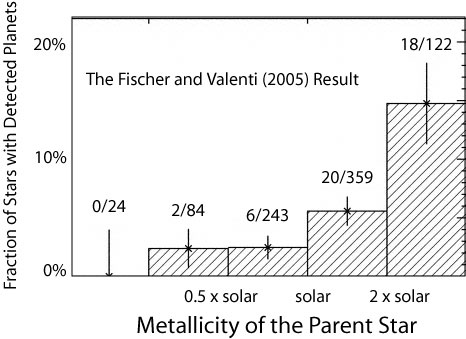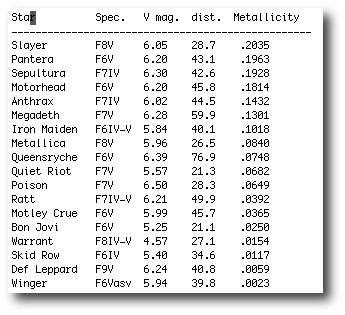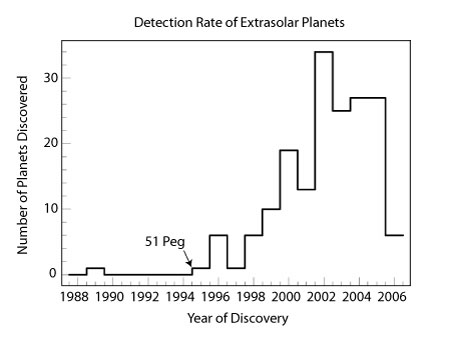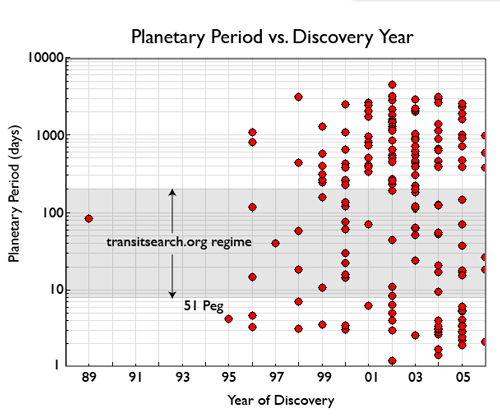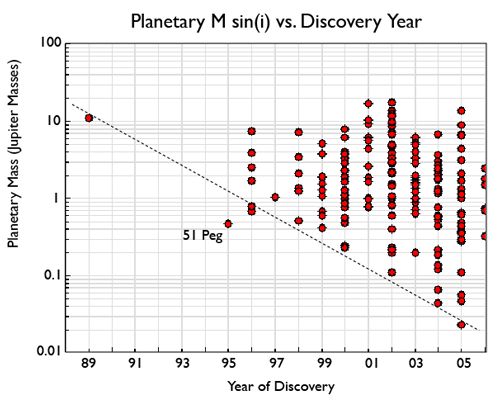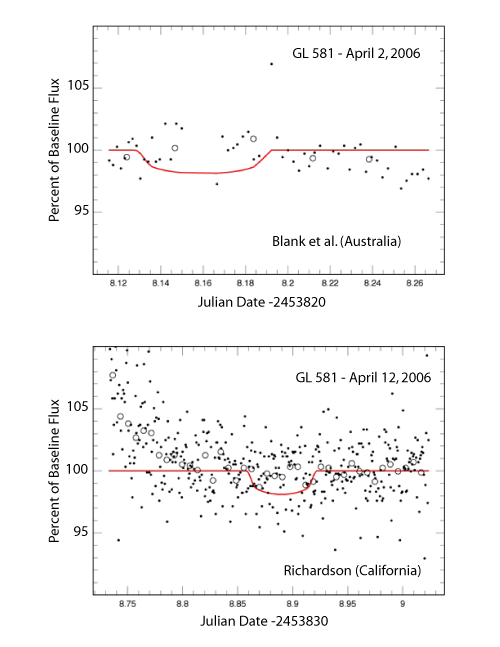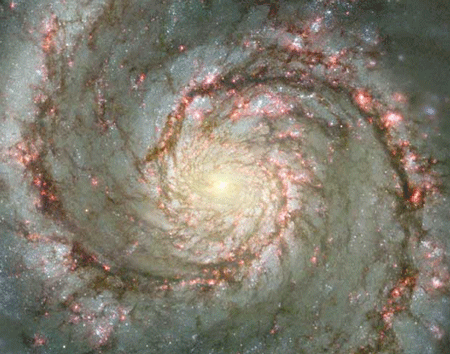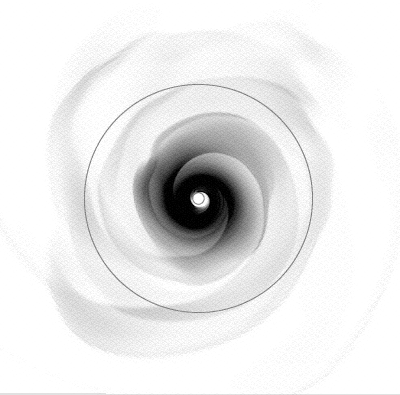[A continuation of posts 1, 2, 3, and 4 on the formation of Jovian planets.]

The idea that the planets in our solar system arose from a flattened, rotating cloud of gas and dust dates back to Kant and Laplace in the 1700s. Their so-called nebular hypothesis drew part of its original support from the spurious suggestion (by William Herschel and others) that the spiral “nebulae” such as M31 in Andromedae might be solar systems caught in the early phases of formation.
By the late 1800s, however, it had become clear that spiral galaxies are most certainly not protoplanetary disks. This realization removed a primary pillar of observational support for the nebular hypothesis, and forced theories of planet formation to rest largely on assumptions and theoretical arguments. For the majority of the twentieth century, astronomers trying to figure out how the planets came to be were forced to work backward from the more or less static clues that are provided by the condition of the solar system today. Not a happy situation. Science works best with direct observations. To really understand how planets form, we really need to see the formation process in action.
As it turned out, protostellar disks around newborn stars were observed before the discovery of the first extrasolar planets. In the early 1980’s, the IRAS infrared satellite discovered that Beta Pictoris, a young, apparently ordinary, sun-like star 53 light years from Earth, was glowing unexpectedly brightly in infrared light. When Beta Pictoris was examined with careful follow-up observations, it was found to be orbited by a large flattened disk of dusty particles. After this first discovery, many more protoplanetary disks were discovered. Beautiful examples occur, for example, in the Orion Nebula, where they are imaged by the Hubble Space Telescope in stark rigid detail against a glowing backdrop of nebulosity. From careful study of these disks, we know that they generally contain anywhere from 1 to 100 times the mass of Jupiter, and are composed primarily of hydrogen and helium gas, along with swarms of dust and icy particles.
If we assume that giant planets do not condense directly out of these disks as the result of gravitational instability, then we need a coherent picture for forming the planets that we know actually do exist. The current best-guess scenario for forming Jovian-mass planets is called the core accretion theory.
In the core accretion picture, planets start small, through the buildup of dust.
If you have a hardwood floor, you can develop a hands-on sense of how dust agglomeration works by refraining from vacuuming under the bed. If you do this, you will notice that the dust does not accumulate in a uniformly thick layer with time. Rather, the presence of slight air currents swirls the dust around, and causes it to build up into dust bunnies. Look at a dust bunny under a magnifying glass, or put it on a flat-bed scanner and import it into photoshop (that is what I did to generate the image at the top of this post). It’s mostly air. The dust – hair, dandruff, unidentifiable strands of ticky-tacky, has a structure that takes up a large volume in comparison to its mass. This property makes it effective at scooping up more material. Once dust agglomerations begin to grow, their subsequent growth becomes easier. A similar agglomerative process may be at work in building up the dust agglomerations that are present in protostellar disks.
Even so, the initial growth of dusty, icy objects in a proto-planetary disk seems fraught with difficulty. The problem is that as the dust-ice agglomerates become larger and larger, they experience a headwind from the gas in the disk. This headwind causes them to spiral inward, eventually vaporizing as they get close to the central star. Some mechanism must exist to concentrate the dusty debris and allow it to build in size more quickly than it can be destroyed through spiraling inward. There seem to be two reasonable candidates for sequestering dust. The protoplanetary nebula might contain vortices, that is, storm systems in the disk itself, in which regions of the disk participate in a hurricane-like flow pattern. Numerical simulations show that disk vortices, if they live long enough, can trap and concentrate solid particles in their centers. Another possibility is gravitational instability (of a more restricted type than dramatic variety described in post #3). If the gas in the disk is flowing very smoothly, then the solid particles in the flow will have a tendency to settle to a thin layer at the disk mid-plane. If this mid-plane layer grows dense enough and massive enough, then a gravitational runaway can occur. The solid particles, the dust, the ice, the gravel can rapidly form larger and larger objects. Once these objects attain a certain size, several tens of kilometers, say, they are safe from the drag force exerted by the nebular gas. A best-guess scenario has tens of trillions of kilometer-size planetesimals emerging in the disk a hundred thousand years or so after the disk forms.
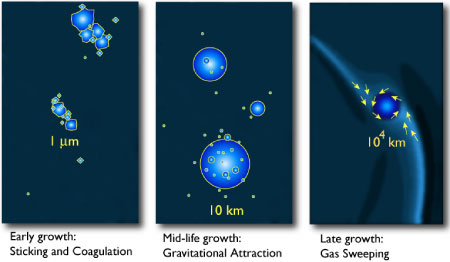
Trillions of planetesimals sounds like a lot. Nevertheless, the disk at that stage would not have seemed particularly crowded. The density of gas would have been thousands of times less than the density of air, and the distance between kilometer-sized bodies would be measured in thousands of miles. If you could transport yourself to a random point in the middle reaches of the disk, there would seem to be only relentlessly empty blackness. No view of the stars, no view of the young forming sun. It would seem as if nothing had changed from the earlier molecular cloud phase.
A thermometer, however would indicate that a difference does exist. Whereas the molecular cloud was incredibly cold, 5 or 10 degrees above absolute zero, the temperatures in the protostellar disk are much warmer, ranging from hundreds, even thousands of degrees very near the star, down to several tens of degrees above absolute zero in the farthest reaches of the disk.


